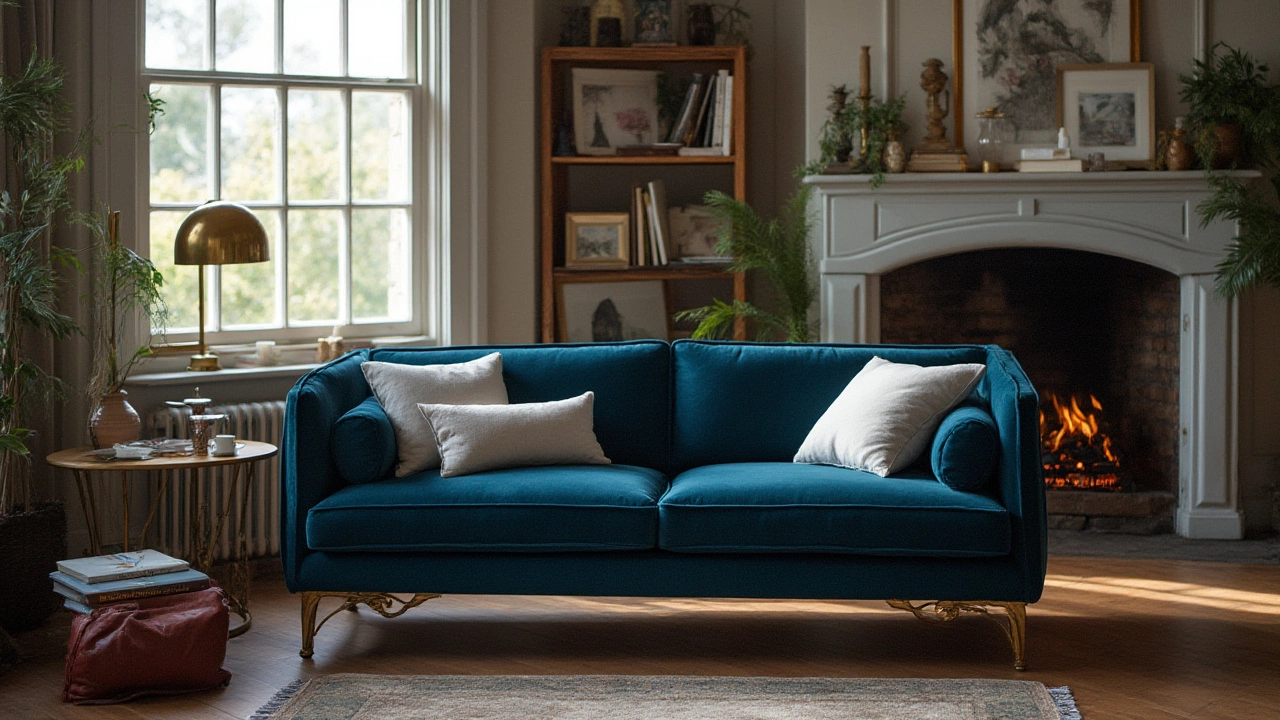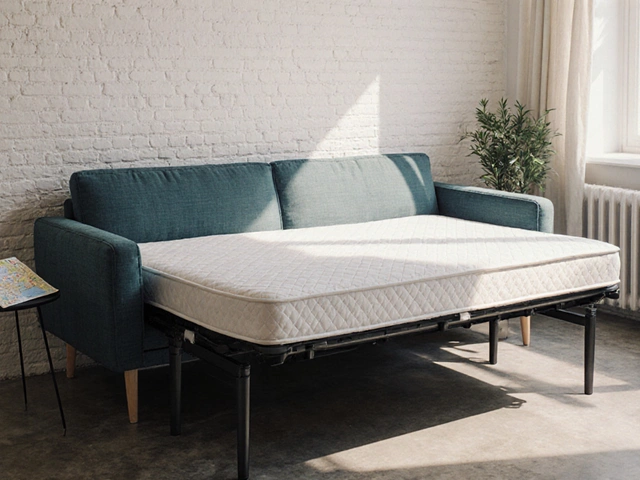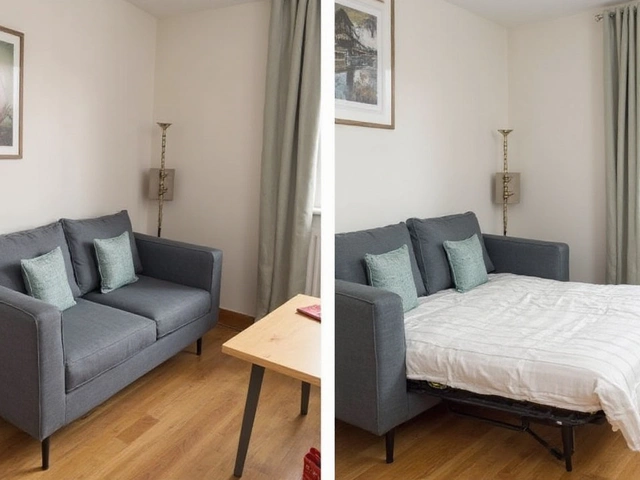Did you know that one of the most expensive sofas ever sold, the Lockheed Lounge by Marc Newson, went for a jaw-dropping £2.4 million at auction? Of course, most of us aren’t looking to install an art piece in our living rooms—we just want something comfy that won’t bankrupt us. But at furniture shops lately, it’s easy to spot price tags creeping toward $2,000, and sometimes way past. It’s enough to make you double-take and wonder: is $2,000 really too much for a sofa, or is it a smart investment?
What Makes Sofas So Expensive?
Walk into any high street sofa store, and you might notice that prices are up, not down. A mid-range three-seater in 2025 seems more expensive than ever. There are reasons for that, beyond inflation or post-pandemic supply snarls. The cost of a sofa goes far deeper than just the fabric and foam you flop onto after a long day.
Materials account for a massive chunk of the price. High-quality hardwood frames (think kiln-dried beech or oak) last far longer than those built with softwoods or cheap staples. A proper spring system inside, like hand-tied coils or quality sinuous springs, adds bounce and prevents sagging over time. Good foams don’t break down and lose support within a year or two—they keep their shape, so you don’t end up sitting in a dip. Then there’s the fabric: natural fibers like linen, wool, or full-grain leather drive costs way up, but they bring durability and a better feel. Synthetic fabrics are cheaper but might not survive Whiskers’ claws or a spilled curry as gracefully.
Labour is the silent cost-raiser. In the UK, a lot of the pricier sofas are made by skilled craftspeople—sometimes right here, sometimes in places with higher labour costs like Italy or Scandinavia. If you see a high price tag, it can mean someone took time to hand-build the frame, sew each seam, or tailor the upholstery, rather than mass-producing the parts with machines.
Let’s not forget design. You pay more for designers with a name, but it’s not all hype—a well-designed sofa supports your back, feet, and even those awkward movie night slouching positions. Higher costs often mean better ergonomics, which can matter if you spend hours here, binge-watching or catching up with mates.
Here’s a look at what makes up the cost of a quality sofa, based on a standard three-seater bought in the UK:
| Component | Approximate Share of Price |
|---|---|
| Material (Frame, Cushions, Upholstery) | 40% |
| Labour (Assembly, Tailoring) | 25% |
| Transport and Logistics | 10% |
| Distribution & Retail Markup | 20% |
| Design & R&D | 5% |
So, while it’s easy to think retailers are simply raking it in, a lot of cash gets eaten up before the sofa even rolls into your lounge. It’s not just a seat—at least if you’re looking at higher-end options. Mass-market versions cut back on most of these, but can you really spot it at first glance? Often, not until your sofa starts creaking after only a year.
What Do You Actually Get for $2,000?
Pricing in pounds, dollars, or euros, the $2,000 mark usually lands you somewhere between budget and luxury—what some would call "mid-range premium.” Think of it like buying a secondhand Volvo instead of a Vauxhall Corsa or a Mercedes.
For that price, you should be expecting a few things as standard. A solid hardwood frame—kiln-dried, of course. If you push on the arms, there’s zero wobble. If you crawl across it (and let’s be honest, cats and kids will), it doesn’t sound like it’s about to collapse. The upholstery should be tightly tailored, with matched patterns if there’s any piping or detailing. Buttons should stay secure; zips shouldn’t catch or break off.
Look for cushions filled with high-resilience foam or, for higher-end, some blend of foam and feathers. Avoid fiber-only fillings unless you like plumping up every single day. Leather in the $2,000 range is almost always corrected grain—it looks nice, but you’ll rarely find full aniline, the very best, because that usually costs even more. Fabric sofas at this price often have higher rub counts—a technical term that means the material can handle kids tumbling, pets climbing, or, in my house, spills from your mate’s pint.
Brand reputation matters too. At this price point, you can expect some kind of reasonable warranty—at least five years on the frame and maybe two on the fabric. Check the detail. Some brands throw in crap warranties just for marketing, so go with those who actually honour their guarantees. Check trusted review sites, not just their own, and dig into the negative reviews too. Are they ignoring customers once the sale is through or do they actually stand by their stuff?
Assembly is usually easy at this level. Think simple leg screwing rather than full furniture-building chaos. Some shops even offer white glove delivery—though you might pay extra.
So why $2,000, and not, say, $500? At that lower price, corners get cut—cheap particleboard frames, stapled together with dodgy joinery, thin foams that squash flat within a year, and covers that bobble or fade in sunlight. If you’re after a sofa that’ll last you a good six or seven years (not just until your next flat move), there’s a reason to invest. The real trick is spotting which $2,000 sofas are up to scratch, and which are just overpriced for the sake of it.
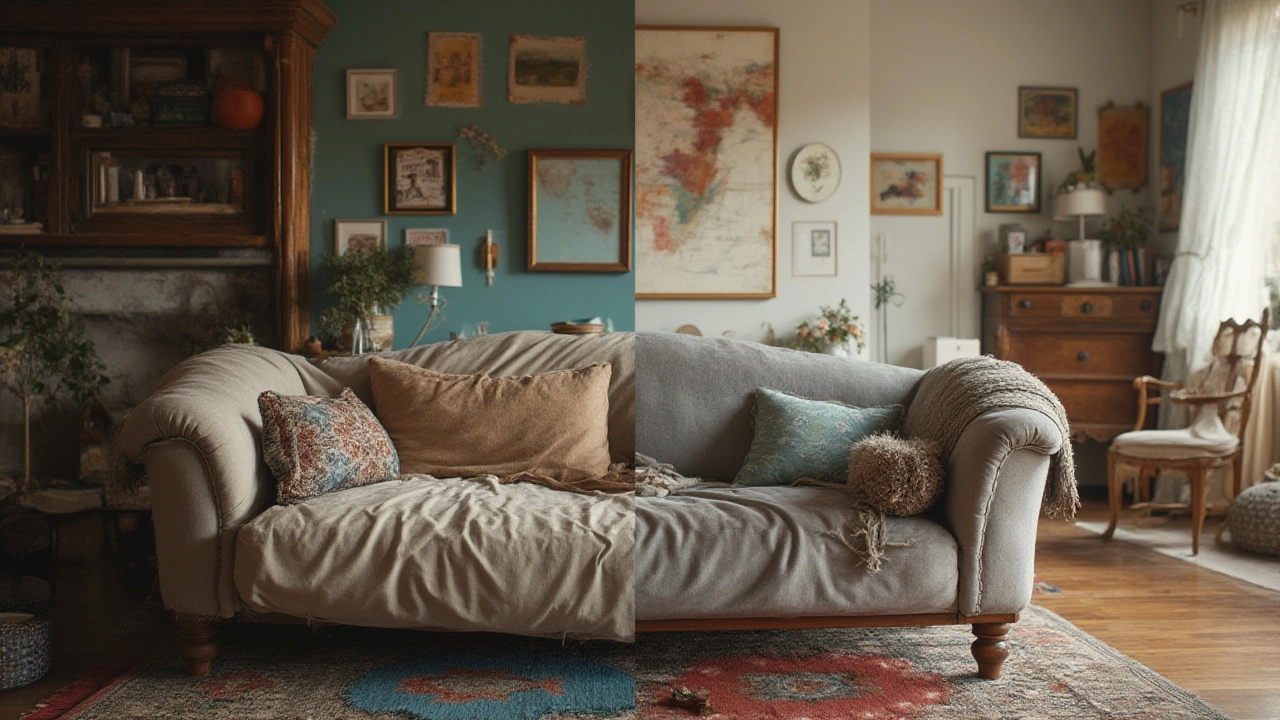
Can You Spot the Difference — Or Are You Just Paying for Branding?
I’ve had mates walk into showrooms, fall in love with a designer piece, then whip out their phone and find a “dupe” for literally a quarter of the price. And honestly, sometimes they look nearly identical. Is it just branding and clever lighting tricking us?
To get past the surface, do the sit-test. The visual stuff can be faked, but the feel of a good sofa never lies. Sit down, flop around a bit, and see if you’re supported in the right places. Do the arms hold up, or do they flop down? (My cat Whiskers gives his own product test by leaping onto the armrest; that’s always telling.)
The weight is a good clue: better sofas are heavier, usually, thanks to solid wood frames and big springs. Ask to see what’s under the hood. Sales staff worth their salt should be happy to show you fabric samples, breakdowns of the internal frame, and even where it’s manufactured. If they get defensive or avoidant, move on.
Watch out for the wool being pulled over your eyes, especially with trending colours or Instagram-worthy bouclé fabrics. Retailers often slap a designer name or “influencer collab” on an ordinary couch and double the price. Sometimes you’re paying for exclusivity, not longevity.
Here’s a simple checklist to catch the real thing versus fluff:
- Check the frame: Kiln-dried hardwood is king. Ask for proof, don’t just trust the label.
- Feel the cushions: If they feel light or go flat when you push down hard, walk away.
- Inspect the joins: Dovetails or dowels beat out cheap staples every time.
- Test the fabric or leather: Rub with your hand, check for pilling, and ask about rub counts or stain resistance.
- Suss out the warranty: A serious brand stands behind its product.
- Google the brand’s reputation: Look past their own glowing reviews—reddit forums and Trustpilot don’t lie.
Don’t rush. A $2,000 sofa isn’t like buying a bar stool—it’s a commitment, so take your time to suss out if you’re genuinely getting quality or just paying for a logo. I know a mate who scored a gorgeous-looking designer sofa on sale at a “fast furniture” store; within six months, it was sagging and squeaking. Lesson learned: if it sounds too good to be true, it probably is.
How Much Should You Actually Spend on a Sofa?
Here’s where things get sticky. Is there a magic number? Surveys from UK households reveal the typical spend sits somewhere between £800 and £1,500 for a main living room sofa. The $2,000 threshold (which is about £1,550 at current rates) sits at the top end for most. People living in bigger homes or with more disposable income often justify the spend. If the sofa is the centerpiece of your social life, you can get good value out of it across years of use—not unlike a solid mattress or daily-use fridge.
If you’re moving around a lot, say renting in city centres or juggling flatmates every year, it barely makes sense dropping $2,000. You’re risking damage, hassle of moving, and it’s unlikely you’ll get your money’s worth before you’re itching to change up decor or downsize. Consider something mid-priced or even secondhand—lots of nearly-new designer models appear on resell apps after people move or redecorate.
Quality wins out once you factor in “cost per use”. Here’s a quick way to work it out: say you’ll have your sofa for 7 years, and use it daily. That’s about 2,500 days. At $2,000, it’s 80 cents a day—or £0.63 for those reading in the UK. If it lasts, supports you well, and looks the part, that’s less than most folks’ morning coffee habit. On the other hand, if it’s a budget sofa that needs replacing after two years, that’s barely worth saving up front.
If money’s tight, sales can help. January and July sales in the UK tend to knock hundreds off display models or discontinued colours. Furniture outlet shops or online deals can sometimes land you a stunner for 30% less, especially if you’re not picky about this year’s “on trend” shade. Watch for delivery charges though—the UK average is £50, sometimes hidden until checkout.
Another tip: look for local makers. Smaller British workshops sometimes produce stunning pieces for less than the big chains, and you’ll support local craftspeople rather than big corporations.
So, how much should you spend? Only as much as you can comfortably afford, and never so much that you’re putting off other essentials. But if you love spending downtime on your sofa—reading, relaxing, hosting mates, even working from home—then $2,000 isn’t an over-the-top splurge. It’s an investment into years of comfort (and fewer backaches).
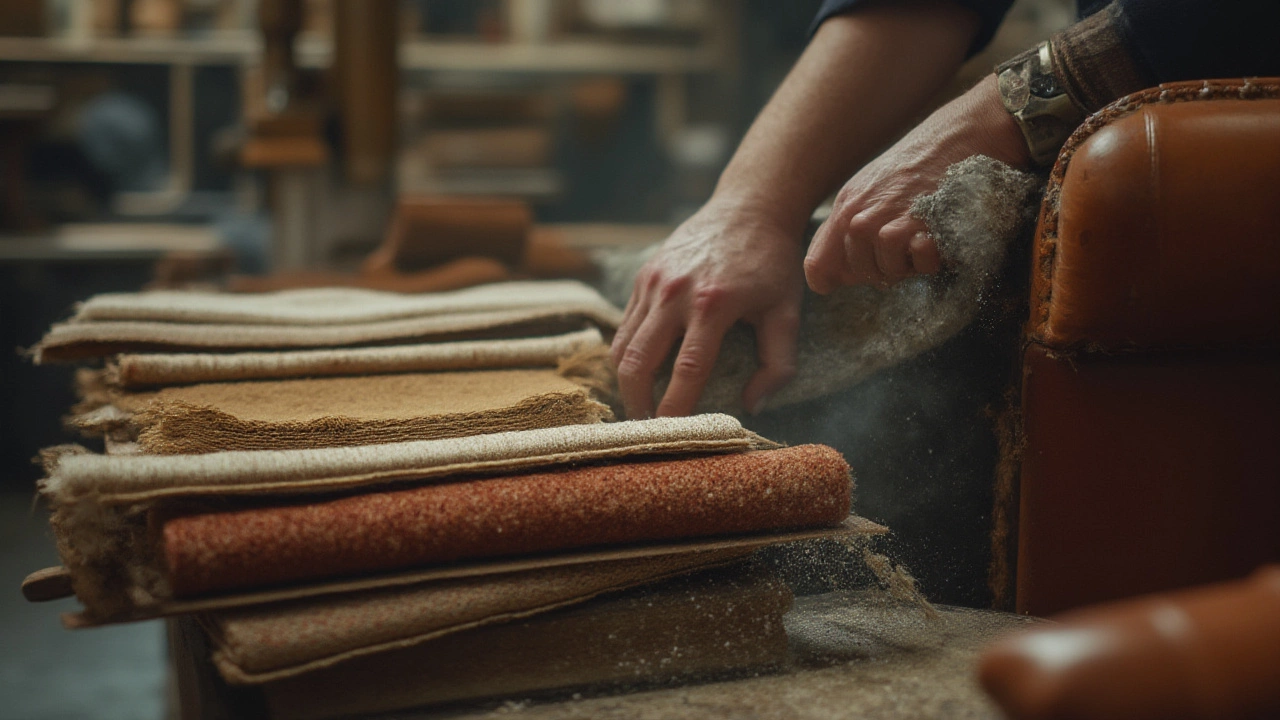
Tips to Make the Most of Your Sofa Budget
If dropping a couple grand on seating makes your eyes water, there are ways to stretch your money further. Getting value isn’t just about the up-front cost but also what you get over time. Here’s how to get the best bang for your buck:
- Go for classic over trendy. That silvery velvet might look fancy now, but it could date fast. A timeless style, in a neutral, lasts through remodels.
- Pick performance fabrics—look for ones with a high rub count (15,000+ Martindale for heavy domestic use), antimicrobial coatings, or stain resistance. Some tech fabrics can even survive red wine spills and Whiskers’ roughest days.
- Customisation doesn’t always cost more. Some UK stores let you tweak sizes, legs, or arms for free when you order. Perfect if you’ve got an awkward lounge shape.
- Check for hidden costs. That $2,000 price might not include delivery, old furniture removal, or assembly. Get all charges up front.
- Try before you buy. If you can, visit the shop and have a proper lounge—not just a quick perch. Or, order samples. Most reputable brands send them free or cheap.
- Ask about returns and trial periods. Some brands now offer 30-night “in-home” trials—handy insurance if you’re nervous about commitment.
- Read the fine print on warranties. Five years for the frame is normal; shorter warranties for the covering. Keep paperwork safe—you’ll thank me if seams split in 18 months.
- Don’t be shy about bargaining. Furniture markups are often high, especially at large chains. Ask for floor model discounts or extras thrown in for free.
- Consider secondhand. High-end sofas depreciate like cars. You’ll sometimes score a nearly-new piece for half price, especially from Instagrammers switching decor every season.
Factor in your lifestyle too. If you’ve got pets (Whiskers is not light on upholstery), kids, or love hosting movie nights with snacks and drinks everywhere, pick finishes that won’t make you cry over stains and snags.
And if you fancy a change every few years, or you’re a serial redecorator? Go cheaper this time, save the splurge for when you settle somewhere long term. Just remember: a good sofa is more than just a place to sit. It anchors your space, supports your body, and collects the stories—nights in, afternoons with mates, early mornings with a coffee, or even a cat curled on your knee.
